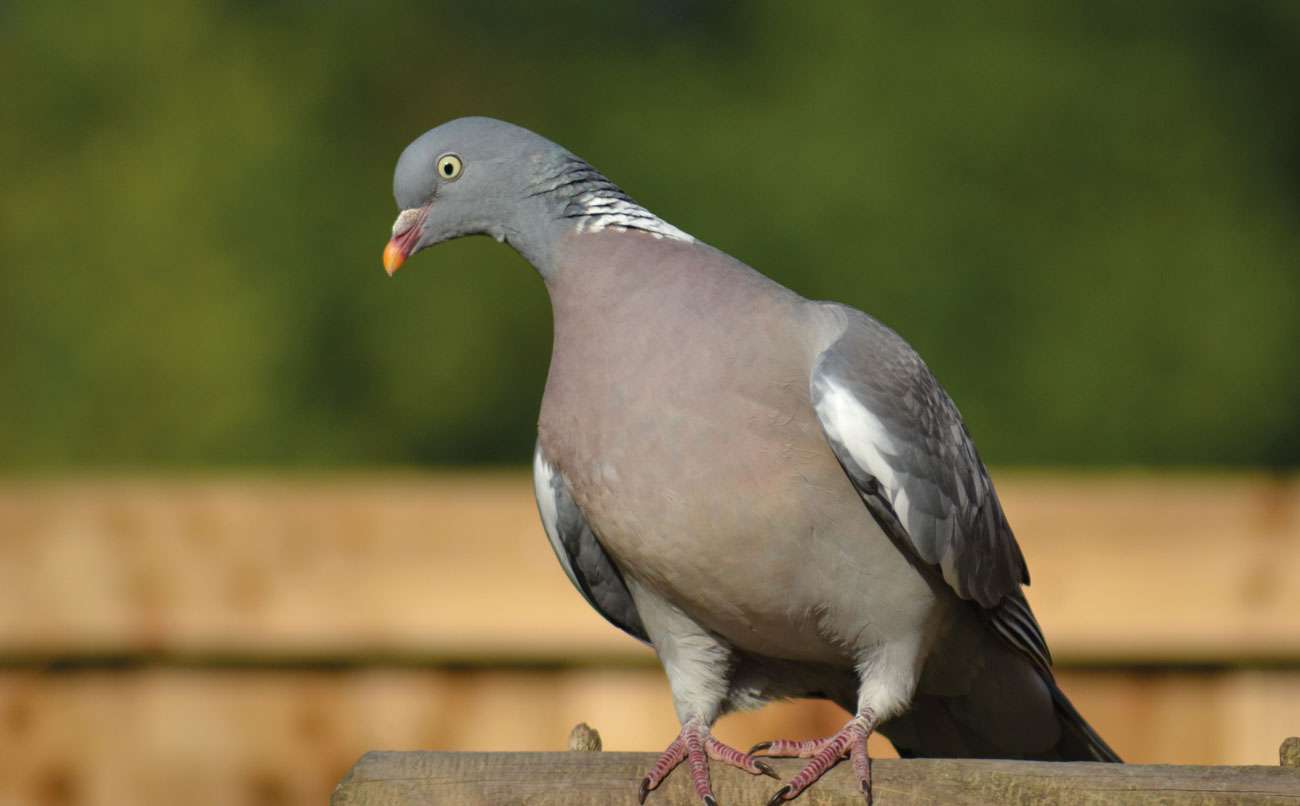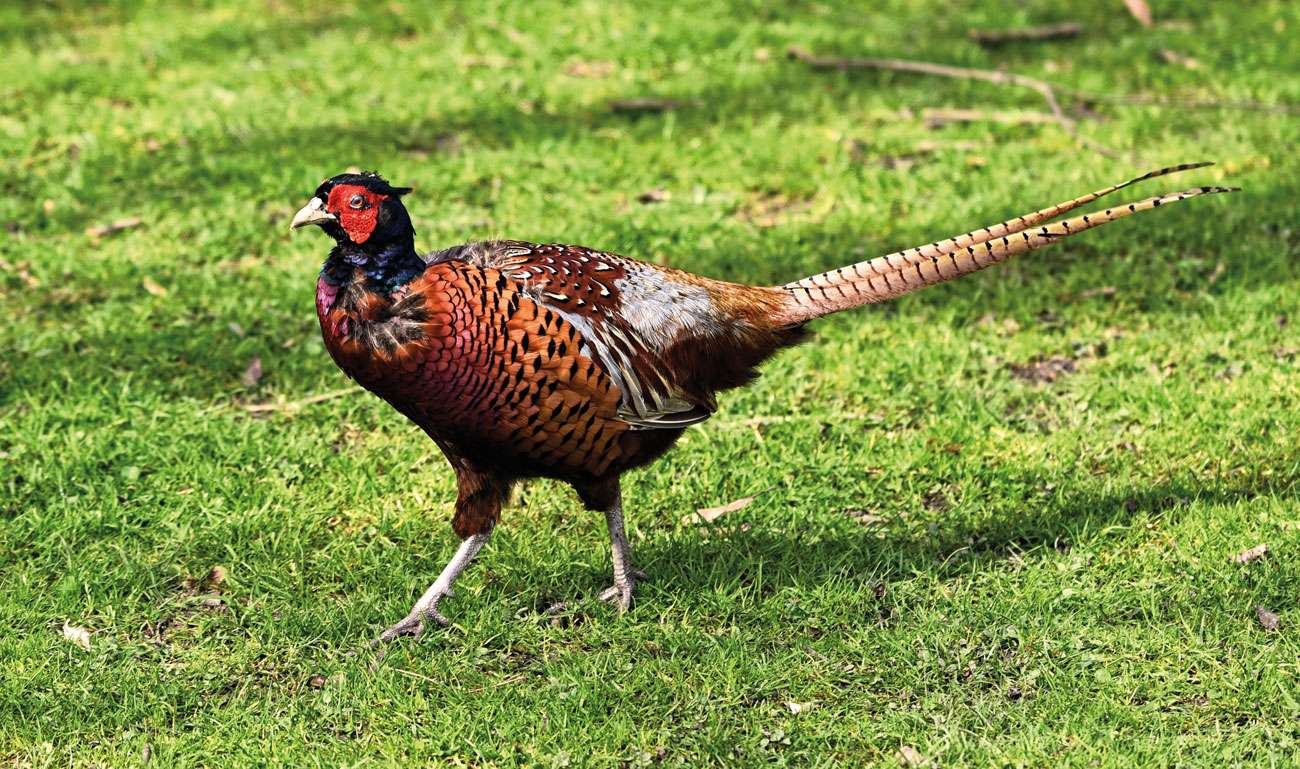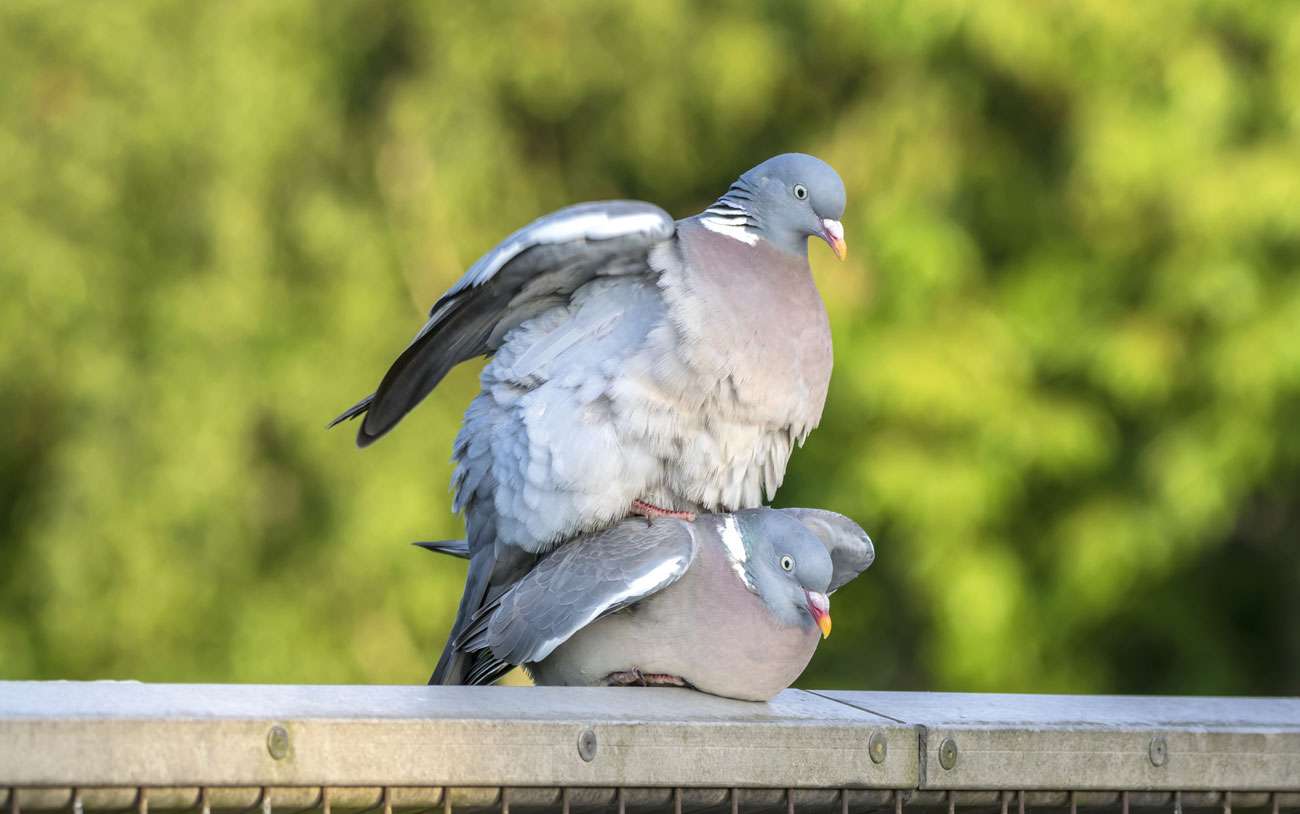
Wood Pigeon (Columba palumbus) – so surprised to see you
Is there any bird sillier than a Pheasant?
They stand there beside the road, you cover your brake and slow down, and you just know what is going to happen next.
Just as you are a few yards away they suddenly decide to jump out in front of you. They are the biggest victim on the roads around here. No sense at all.
The males are one of our most incredibly beautiful birds but that smartness doesn’t seem to extend up those long necks into their brains.
They do get their own back though. Walk through long grass in the country and they hunker down until you are nearly on them. And then they erupt in a welter of feathers and screams from beneath your feet. I don’t know who is more shocked – the people who disturb them or the Pheasant.
Could there be a dafter bird? Well I think there is. The Wood Pigeon. Always fooling around, it is the joker in the pack. It is apt then that one of its ‘coo coo, coo coo, coooo’ calls has been likened to laughter.
They appear in or over all our gardens and fly overhead daily, especially in autumn when migrant flocks appear, although not usually in the vast numbers some friends and I saw one November morning in the Surrey Hills in 2015. Over 11,400 migrated by in the sunshine above a sea of fog, going mostly south-west, during a six-hour watch.
I can’t help but like them – even if they do nick my spring peas. They make up for it by giving us plenty of laughs throughout the year.
Wood Pigeons look funny for a start. They remind me of dumpy little vicars who have been in too much of a hurry to put on their Sunday best properly.

Common Pheasant phasianus colchicus – looking for your car?
The white dog collar is on the wrong way round and the long grey cassock dragging behind them is undone at the top. The exposed pink ‘shirt’ reveals a mighty mishap perhaps involving a spilt goblet of communion wine.
In flight they boast a thick white ‘go faster’ stripe down each wing and deliver an impressive wooing display with them, rising and cracking them together with a whiplike sound before fanning their tails and gliding back to their sentry posts in the trees.
Those small yellow beady eyes staring out from a large grey hood make them look as if they are enormously surprised to see you. But they are masters at giving you the shock of your life.
Be careful when you are up that step ladder in late Autumn and thinking it’s okay now to cut back your dense conifer hedge.
Who might explode out just inches from your shears but a hiding Wood Pigeon! It might have still been sitting on a nest, or just lurking, like a child waiting to jump out at you for a joke. Gotcha!
There’s one right now, doing a Mick Jagger impression as he struts across the lawn towards a seemingly coy potential mate.
She is apparently uninterested but hangs around anyway. A crash and whistle of their wings – they rarely seem capable of arriving or leaving silently – and they are now up on a bare branch. He’s idling up to her and rolling his head around like he’s seeing double.
Next there’s a bit of jousting as they begin a game of fencing with invisible swords. I’m not sure if this is part of the mating process or whether they are rivals but the one now on top seems satisfied so I assume it was the former.

Wood Pigeons (Columba palumbus)
As I write this in early March there are House Sparrows, Blackbirds, Magpies and Robins collecting nesting material. Spring is in the air.
But the Wood Pigeons have been nest building in various places throughout the winter and were acting frisky long before February’s snowfall.
You’d think they would have got the hang of nest building by now but often their platform of sticks is so flimsy, and so badly placed at the end of a branch, that it falls victim to gales.
Occasionally one can find the remains of an apparently hatched or predated egg on the ground as early as January. I suspect that most chicks arriving this early have very short lives.
Wood Pigeons’ antics enthral us as we peer into their lives and they like peeking into ours too – by flying straight at our windows. Or perhaps they have just recognised their mirror image and thought it was an ugly imposter.
These bonkers birds seem to mainly survive intact, as do our windows. But half a kilo of anything hitting your glass from outside is enough to make you jump and drop your cuppa. It’s a good job these birds are well padded.
Check the window for cracks afterwards and you may see their calling card – a white powder known as feather dust which leaves a ghostly imprint of the bird with its wings spread wide.
This substance comes from decaying barbs on the Wood Pigeon’s down feathers and is used to make it waterproof when preening. It seems to work well because they leave it like a scum in the bird bath.
I like to change the water for the benefit of other species wanting a drink. You can be sure the guys who left me to clear up their mess are nearby watching and enjoying the inconvenience they caused. Having a right laugh.
Twitter – @Crane_Spotter
Click here to see all of Robin Stride’s previous Crane Spotters.











